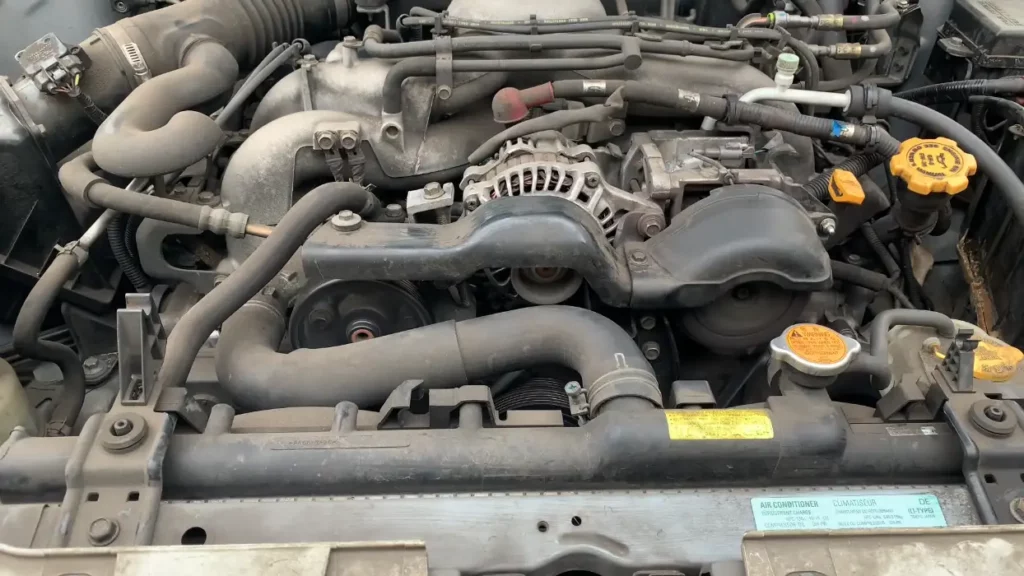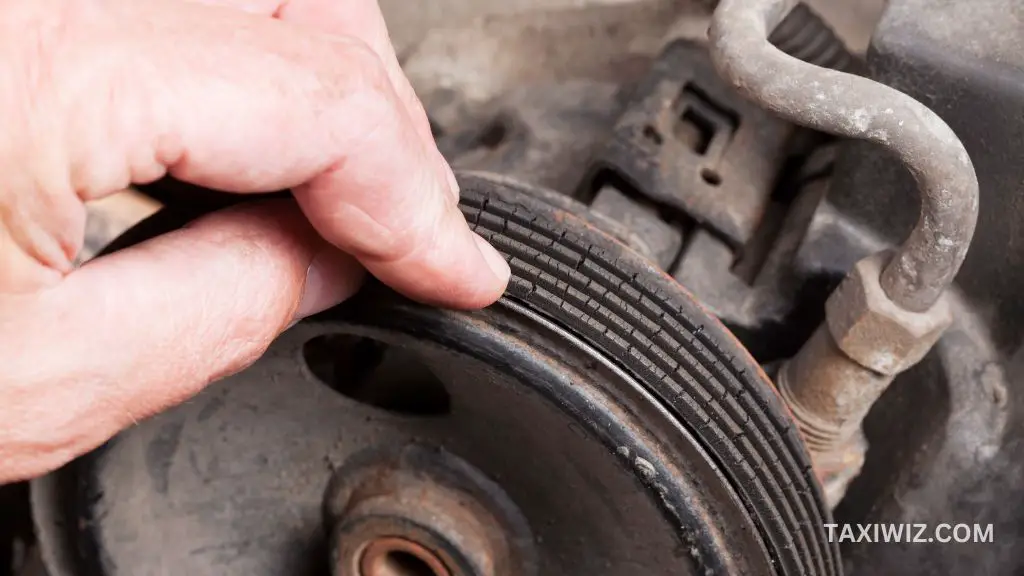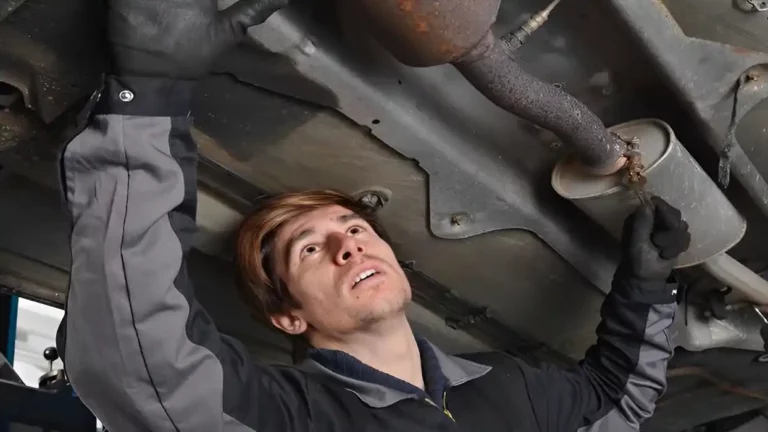Car Squeals When Starting Cold | Reasons & Solutions
Most car troubles can be heard faster than they can be seen. Any kind of rumble, rattle, or clunking from your car will most definitely mean that something is amiss.
If your car squeals when starting cold and stops when you shut down the engine, you should check out the problem. Some likely reasons for the problem are:
- Restricted movement of belts
- Cold air freezing the engine belts
Depending on the problem, you’ll need to change the belt or fix it. Here’s what you should know on the topic to decipher the issue.

Reasons Behind a Squealing Car
The issue of a car squealing at ignition on a cold day is mainly caused by the belt.
Resistance in Belts Affect Operation of Multiple Functions in the Car
Belts are crucial in many operations of a car as several components of the car rely on belts to move bearings, camshafts, ancillary components, and so on.
In old cars, there are separate belts for maintaining the operation of each component.
There is a belt for running the car’s alternator, which is a piece of hardware that converts mechanical energy to electrical energy.
Then there is a belt in the AC compressor unit, and another one in the power steering pump.
When any of these belts have resistance, you will hear a squealing sound as soon as the car is started.
On the other hand, in modern cars, there is a single belt called the serpentine belt that serves all-in-one functions for the alternator, air conditioning, power steering pump and even the water pump in the car.
Consequently, if this belt has restricted movement, then the car will make a squealing sound from the very get-go because the alternator is initiated as soon as the engine is put on the drive.
Cold Weather Causing Belt to Freeze Up
Belts are quite strong in warm climates but in cold weather, they might freeze up very quickly and cause extreme resistance in movement.
If you are turning the engine on after 4-5 hours, then more maintenance and caution are needed as the belt might have gotten frozen.
Suddenly turning the car’s ignition on in this condition will cause the belts to pull and drag forcibly, causing that squealing sound at the ignition.
This is why freezing temperatures will reduce your belt’s mileage significantly and cause a squealing sound.
Find out which one of the belts has gotten stuck and then you can effectively sort out the problem.
A Step-by-Step Guide on Figuring Out Why the Car Squeals at Startup
The heat generated from friction caused between the belt and the bearings will make the squealing sounds worse.
Here are some parts of the car that might be generating the squeals, let’s take a look at them to identify the problem.
Step 1: Identity the Problematic Belt by Testing Out Operations
The belt in the alternator might be causing the squeals. To check this, just turn the headlight switch on and off. If you notice the screeching sound change, then the issue is with the alternator’s belt.
If that is not the case, check to see if the belt of the air conditioner is creating the sound by turning the power of the AC on and off.
Any noticeable change in the screeching sound at this point will mean that the belt in the AC is the problem.
Finally, check whether the belt with the steering wheel has frozen up, by putting a full lock on the steering wheel and then moving it from left to right.
Listen hard to detect any change in the sound, and if there is a change, voila we have found the issue.
Step 2: Inspect the Belts Manually
The easiest fix would be if the belts unfreeze all by themselves while you are trying out the operations of the car to pinpoint the problem. If the problem does not get fixed on its own, you can inspect the belts manually.
Get the car’s manual to navigate the intricate wirings of the engine and locate the belt. There are two ways you can follow here.
Related Post: High Pitch Squeal When Accelerating – With Fixes!
Quick and Temporary Solution to Stop Cars from Squealing
Yes, there is a quick solution but it is a temporary fix to the problem and it only buys you more time until you get a permanent fix.
For this, first, you will need some lubricant or belt dressing liquid. Take the belt that’s squealing and put some lubricant onto it.
This should reduce the friction between connecting parts and keep the belts safe. Start the engine now and see if the screeching has stopped.
Permanent Solution to Stop Cars from Squealing

If the easy solution fails, it’s time to get hands-on. Turn the engine off, and then use your fingers to flex the screeching belt.
Carefully inspect the belt to see if there are any tears on the belt, or if any area has become inelastic due to use and wear. If you see that the belt is just too old, you will need to replace it to avoid further damage.
In addition to this, check the stretching capacity of the belt. Your car’s manual will tell you how far and to what direction the belts should stretch.
For example, serpentine belts used in modern cars have very little flexing capacity while some V-shaped belts used in old cars will have a flexing capacity of about 1.5 inches.
Also, note that belts are soft when they are in good quality and shape. If you see that a belt has become hard and gained some shine on it, then it means that the belt has aged beyond its functional years.
At this point, you should get the belt replaced or it might snap if further exerted.
Related Post: Serpentine Belt Noise When Accelerating – [Try This Easy Fix!]
Frequently Asked Questions [FAQs]
Can I replace the belts on my car on my own?
You should not replace the belts on your own unless you are a licensed mechanic.
Any misalignment or improper installation may damage the adjoining components of the belt and create a greater hassle.
How often should I replace my car’s belts?
V-belts in old cars should be replaced every 30, 000 miles. Serpentine belts may be replaced after every 100, 000 miles unless you live in a cold climate zone and notice signs of damage prematurely.
What are other signs of belt damage apart from squealing sounds?
A squealing sound is the most common telltale sign of damaged belts. Other bad signs of a damaged belt are a failing A/C, overheating engine, and visibly cracking belts.
Conclusion
Cold weather often makes the engine’s belts shrink up and freeze. The cold temperatures may also cause cracks to appear in the belt.
If your car squeals when starting cold, you should check out the belts and oil them once in a while before starting the car. Take this special care during incredibly cold days to maintain the belts for more years.
In case the damage has already been done, get the belts replaced at your earliest convenience, otherwise, the connecting accessories might also be damaged due to friction and resistance from the belts.




